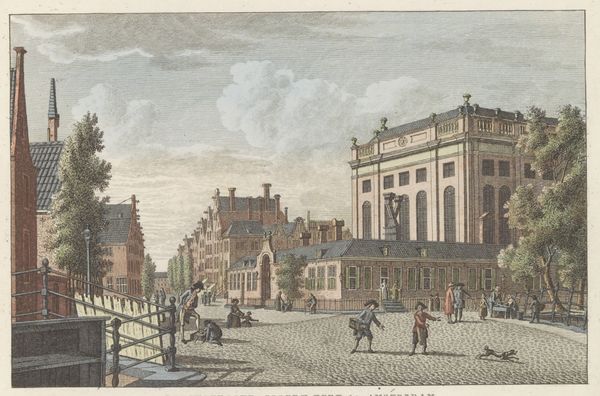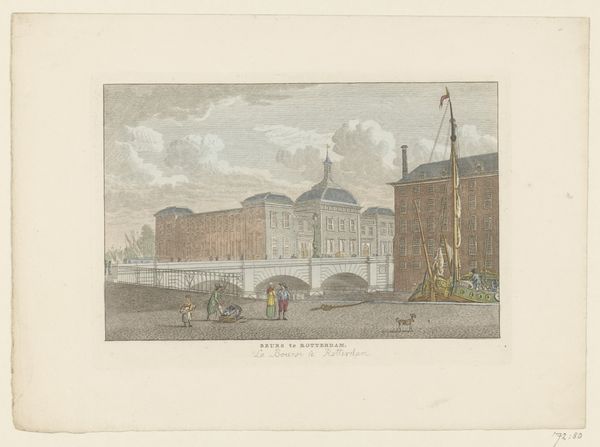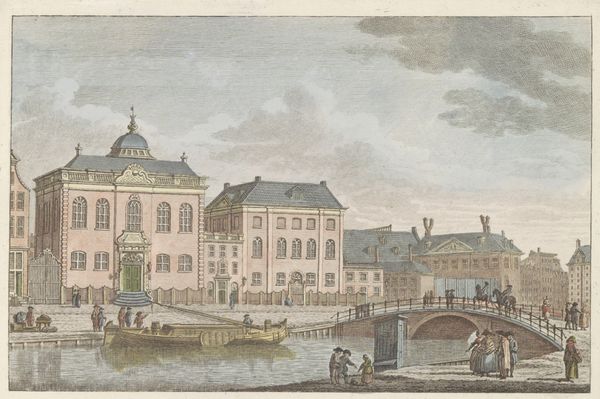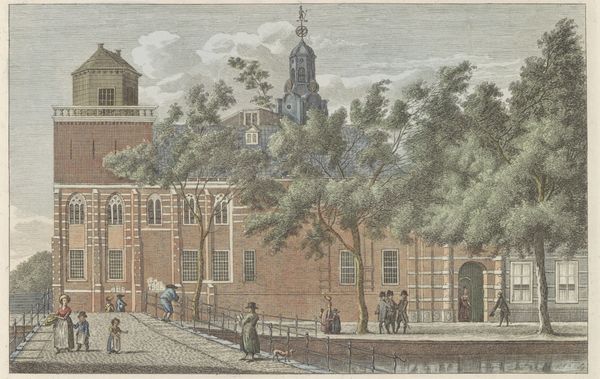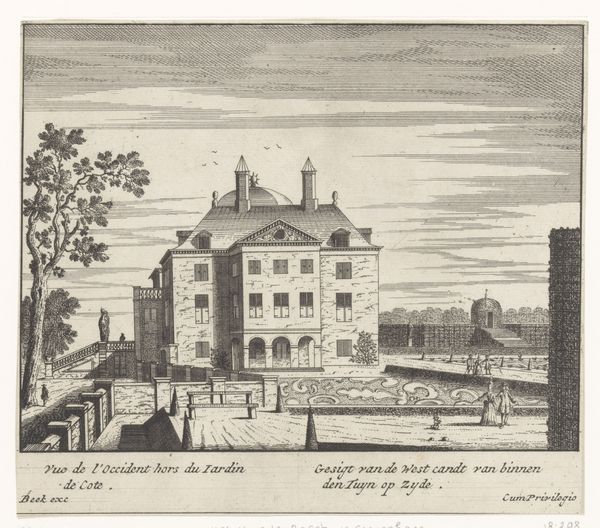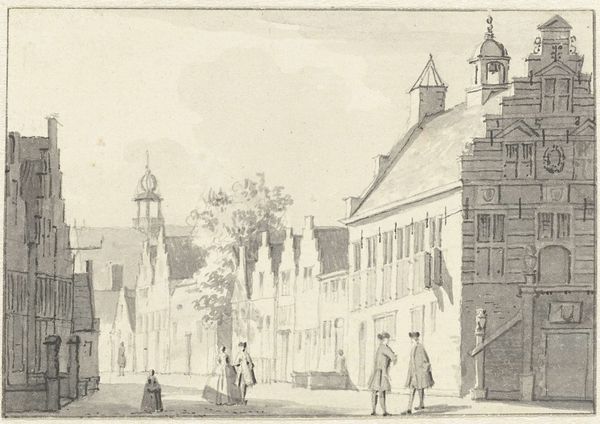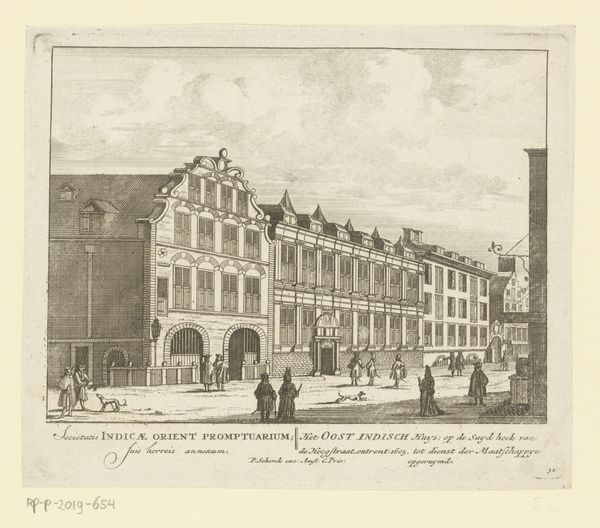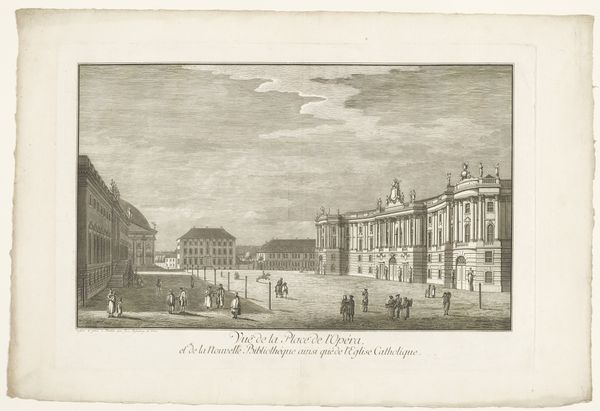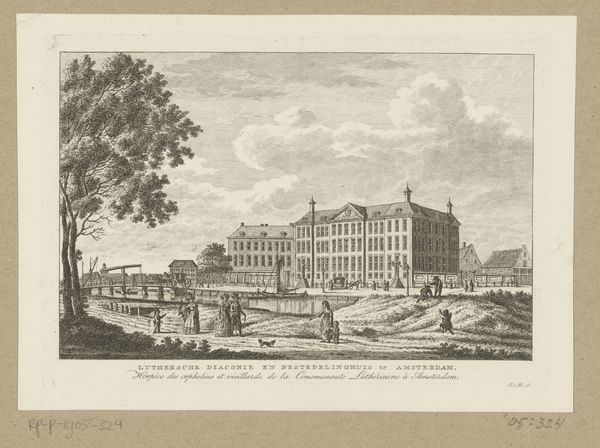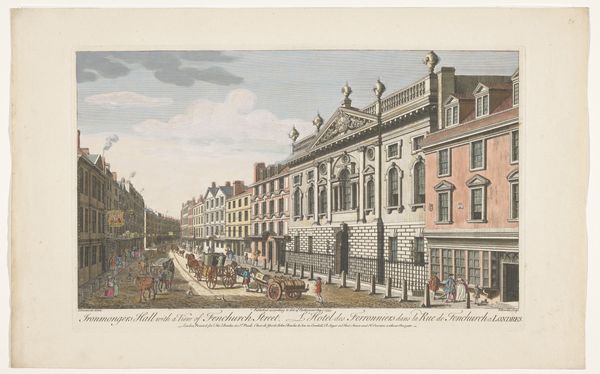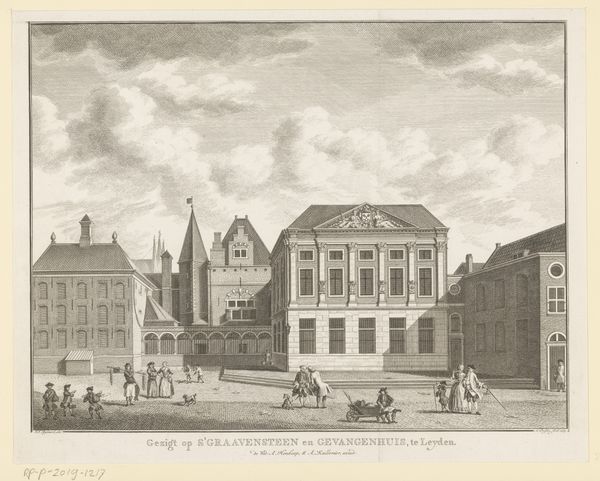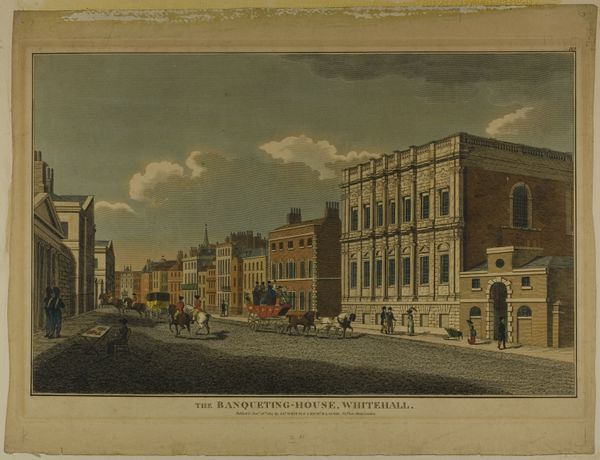
Dimensions: height 177 mm, width 248 mm
Copyright: Rijks Museum: Open Domain
Editor: So, this is "Beurs te Rotterdam, ca. 1790," possibly created between 1786 and 1825, attributed to Carel Frederik (I) Bendorp. It's a watercolor and print piece depicting a cityscape. It’s rather…orderly, I think, with its defined architectural shapes. How do you interpret this work? Curator: I see this piece as more than just a depiction of a cityscape. Think about Rotterdam at that time - a booming port, a hub of international trade. The “Beurs,” or stock exchange, wasn't just a building; it was a symbol of capitalist expansion and the societal shifts that came with it. Who benefited from that boom? And whose labor built it? Editor: That's a really interesting point. I hadn't considered the socio-economic aspect of it. So, the artist’s choice to depict it so precisely, does that suggest a commentary? Curator: Precisely. Is the artist celebrating progress, or subtly critiquing the emerging class divisions inherent in this burgeoning economic system? Notice the ordinary people in the foreground going about their lives, while in the background the merchants would be accumulating wealth inside the Beurs. Do they even look like they’re part of the same society? Editor: I see that. The people in the front feel…almost separate from the impressive architecture behind them. It almost highlights that separation. Curator: And what about the Dutch Golden Age influences with the Baroque flair, doesn't that juxtapose nicely against what might now be called an early modern capitalistic venture? Editor: I didn't notice that the Baroque and Golden Age style was contrasting with it...That gives me something to explore, thank you. Curator: Absolutely, thinking critically about these layers gives us a richer understanding of both the artwork and the society it represents.
Comments
No comments
Be the first to comment and join the conversation on the ultimate creative platform.
